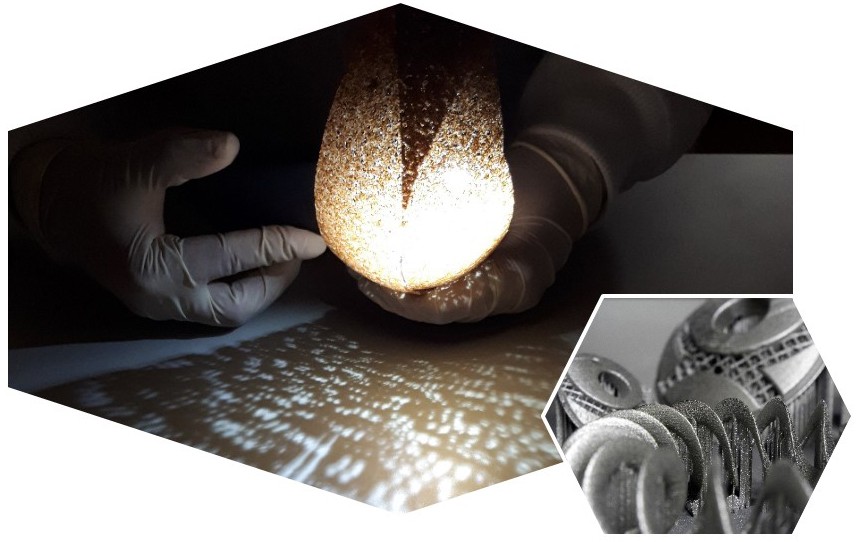
R&D Line New Materials in Additive Manufacturing
As a consequence of the current state of the markets, manufacturing companies are increasingly demanding the development of products or parts with innovative functionalities and/or properties such as the incorporation of natural additives and fillers, biodegradable and/or environmentally sustainable materials, and the addition of fillers to obtain conductive materials, among others. Metallic materials have also been used.
Therefore, the objective of the work developed in this line of action has been to develop materials with which to obtain parts through different industrial processes. We have worked on both plastic and metal materials.
We have worked with the following specific objectives:
- To develop two formulations with natural fibres in order to obtain chippings with which to obtain parts that look like wood, by means of injection and FDM technology. To do so, we have prepared several formulations have that incorporate natural fibres and almond shells accounting for 5% of their weight. All the formulations are based on an acrylonitrile-butadiene-styrene copolymer.
- To develop more sustainable formulations designed to obtain hollow pieces through the extrusion-blow moulding process. We have prepared formulations that incorporate cellulose fibres and almond shells accounting for 5 and 10% of their weight. Subsequently, we determined the fluidity of the material and we carried out extrusion-blow moulding tests to obtain bottles.
- We prepared starch-based polymer formulations with 20% almond shell, and we studied the effect of adding different natural oils (epoxidized flaxseed oil, epoxidized soybean oil and epoxidized corn oil).
- To develop a conductive FDM filament.
We studied the interaction of different pigments in two thermoplastic matrices of the same material, albeit provided by different suppliers. For this purpose, after processing it using rotomoulding technology (Figure 4), we took colourimetric (CIElab) measurements to evaluate the difference in colour when using one reference or another. We also carried out a qualitative evaluation of the bleeding of dyes according to UNE EN ISO 183:2000.
Project subsidised by IVACE
- Start date: January 2018.
- Duration: 12 months
- Status: completed
IVACE PROGRAMME: A line from the Regional Government of Valencia (GVA) to strengthen the capacity and activity of AIJU to develop excellence in R&D, disseminate the results of the research carried out and facilitate and promote the transfer of knowledge to companies in the Valencian Community.
CONTACT COORDINATOR:
- Name: Ana Ibañez
- Telephone: 96555 44 75
- e-mail: procesos@aiju.es
